The siege of Sarajevo
and the break-up of Yugoslavia
The first humanitarian aid convoy
The war in Bosnia, which for the first time in the post-war history spurred the Polish society to get involved in providing international aid, was the bloodiest conflict in Europe since the end of the Second World War. Military operations spread across all the Yugoslav republics. A distinguishing mark of the Balkan wars was ethnic cleansing, concentration camps, internment camps, rape and genocide. Their symbol – the regular siege of Sarajevo, which lasted for several years. The city was shelled and deprived of water and electricity supplies. Providing humanitarian aid to Sarajevo in December 1992 was the obvious choice. It was impossible to remain indifferent to the suffering of the people. PAH convoys reached Sarajevo and other Bosnian cities, and in time – all parts of the former Yugoslavia, in accordance with the principle of impartiality of humanitarian aid, bearing in mind that there were innocent victims on all the sides of the conflict.
In October 1992, on Polish Radio, Janka Ochojska, who had just returned from a humanitarian intervention in Sarajevo organised by the French EquiLibre, made an appeal to Poles for aid for the besieged city and encouraged them to organise a convoy from Poland. Poles, who until recently had themselves been the beneficiaries of humanitarian assistance, had a chance to show their solidarity after the democratic breakthrough. The appeal was effective. People declared their willingness to help. The social activist Magda Grodzka helped to organise the campaign. On 26 December 1992, the first convoy set off, which on 1 January 1993 reached Sarajevo. In the following years, PAH continued to help Sarajevo. Already in the first year, relief supplies were delivered not only to Sarajevo, but also to Belgrade, Kosovo, Skopje and Tuzla. In 1999, PAH provided assistance to refugees from Kosovo living in camps in Albania.
In 1994, as part of a nationwide campaign, children wrote letters to their peers in Yugoslavia. Authors of 460 out of 6,000 letters sent were invited to Warsaw to take part in the first Children's Parliament. The result of the meeting was a joint Appeal, which was forwarded to Strasbourg. “Destroy arms depots, and in their place plant thousands of trees and set up playgrounds. Then you will hear laughter instead of crying children” – this excerpt of the Appeal appeared on 5,000 PAH postcards bearing the white dove of peace and signed by the children. The cards reached Sarajevo along with the relief supplies from Poland, and the answers were brought back to the senders. In the same year, children awarded Janka Ochojska the Order of the Smile.
The war in the former Yugoslavia was over, but the rubble remained. In 2000, the PAH office in Kosovo renovated a community centre and a cinema, organised a vocational school, equipped school laboratories and workshops, set up a theatre group in the Kacanik commune inhabited by Albanians, and in Strpce, a commune inhabited by Serbs, ran language courses, an Internet centre and a reading room. What mattered was not only the response to the plight of the people, but also the reconstruction of social ties.
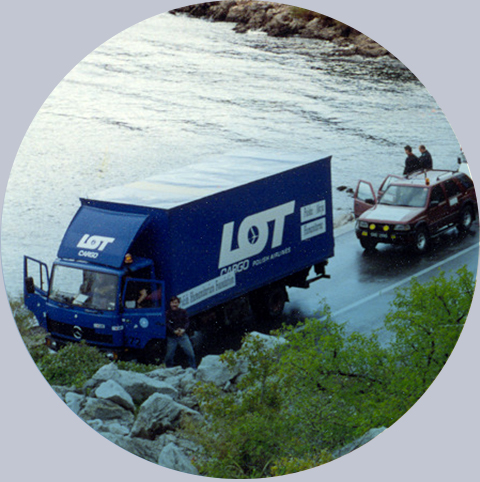
Poland accepts refugees
PAH’s refugee support centre is established
The war in the former Yugoslavia and the war in Chechnya which broke out soon after meant that from the 1990s onwards more and more refugees began to come to Poland. Poland ratified the Geneva Convention of 1951 and began to grant refugee status in accordance with international law. PAH provided assistance directly at the site of the conflict, and it paid heed to the fate of the people affected by the war in Bosnia. All this translated into a sense of responsibility for those who, fleeing from the dramatic events, found themselves in Poland. PAH provided them with support, and with time it became involved in activities intended to find and implement adequate legislative solutions. It was clear that real protection cannot be limited only to granting status – it should consist in creating a safe living space for people who had to flee from their own country and providing support to both the affected individuals and the host community, because creating a place to live is a common task.
On 11 September 1993, Marek Edelman and Janina Ochojska made an open appeal to Polish hospitals for help in treating the wounded from the former Yugoslavia. In response, Poland offered 150 places in 20 hospitals. In the same year, in cooperation with the Office of the United Nations High Commissioner for Refugees (UNHCR), PAH began to provide regular assistance to Bosnian refugees quartered in holiday centres temporarily converted into state refugee centres. PAH employees visited the centres, delivered clothes and cleaning supplies, and transmitted news from Bosnia.
On 1 October 1993, the first cooperation agreement with UNHCR was signed. Thanks to subsidies, PAH’s Refugee Assistance Centre was established, which by the end of the first year had provided assistance to 25 families of refugees from the former Yugoslavia (mainly from Bosnia) and the former USSR (mainly from Armenia). The Centre’s long-term programmes focused mainly on conducting vocational and activation courses, teaching Polish language classes, providing legal counselling, conducting various activities in Centres for Foreigners, as well as launching campaigns and projects addressed to the Polish people (such as organising the annual Refugee Review [a refugee film review] and the International Refugee Day). A special group for which help was provided was children of refugees.
Just as the experience of providing support in Bosnia initiated PAH's assistance activities addressed to refugees in Poland, the activities carried out under the Repatriate Aid Programme arose from providing assistance to Kazakhstan. In December 1995, PAH, for the first time, organised Christmas pilgrimages for the oldest exiles from Kazakhstan, who were hosted by Polish families during their Christmas celebrations. People who had left Poland as children, for the first time in 70 years had the opportunity to visit Cracow, Warsaw and Częstochowa. The tradition of pilgrimages organised by PAH was kept up for seven consecutive years, and in 2002 PAH also started providing support to repatriates brought to Poland by the government.
The Małgorzata Jasiczek-Gebert Memorial Support Centre for Refugees and Repatriates (CPUiR) also advocated improvement of legislation, among other things by raising two important issues: the situation of refugee children and the situation of those foreigners whose legal status had not been formally determined for years. Thanks to CPUiR’s efforts, on 1 January 2012, the Act on legalisation of stay of some foreigners in the territory of the Republic of Poland came into effect, introducing the so-called amnesty for foreigners. In 2011, PAH together with other organisations launched a campaign to prohibit detention of children in the territory of Poland. At the end of 2015, CPUiR evolved into a separate organisation – Refugee.pl.
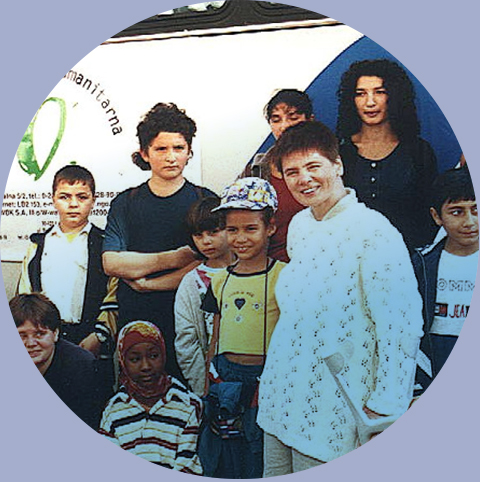
The flood of the millennium
PAH responses to a natural catastrophe
In July 1997, south-western Poland and the neighbouring countries were struck by the worst flood in centuries. The waters in the upper Oder and Vistula basins overflowed, threatening first the smaller towns, and soon after also the large cities, such as Wrocław and Opole. Thousands of people were evacuated from the flooded areas. Thousands of people were rendered homeless and lost all their possessions. Historic monuments suffered damage, including the salt mine in Wieliczka. Fellow countrymen in Poland and abroad showed solidarity, and PAH, deeply moved by the situation, provided aid to victims of a natural disaster for the first time.
When the flood wave hit the Polish cities and towns, everybody joined forces to help the victims. Residents collectively resisted the destructive element, building dykes and supporting each other. From the very first moment, generous donations for flood victims were transferred to PAH’s account, also by Polonia (the Polish community abroad), in particular by Polish Americans and Canadians.
The assistance provided by PAH was divided into two stages. First, we provided water, food, mattresses, sleeping bags, medicines, medical supplies and cleaning products to people staying in regions cut off by the flood. Then we financed the renovation and furnishing of houses, schools and community centres, and for children from areas affected by the disaster (from Brzeg, Kłodzko, Racibórz and Wrocław) we organised holidays in other parts of the country. In particular, we helped the most vulnerable communities, including large families, single mother’s homes and homeless shelters. It was the first such a big humanitarian aid intervention launched by PAH in Poland.
During the subsequent, fortunately smaller, floods in 2001 and 2010, PAH primarily rebuilt homes and financed renovations. We were also involved in helping flood victims in Germany, Ukraine, the Czech Republic and Hungary.
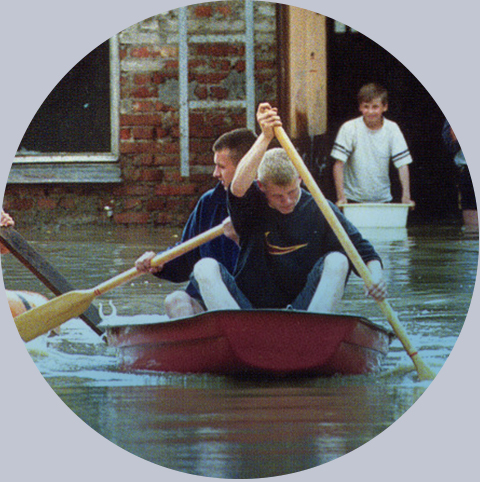
Pajacyk
PAH launches Pajacyk – a feeding programme for children
PAH – always ready to help people in distress, regardless of how far the crisis-affected place is located – did not underestimate the urgent needs that it saw close by. In 1995, teachers from the Bieszczady mountains raised the alarm: in their schools there were malnourished children who fainted from hunger during lessons. PAH visited that place, collected relevant information and as a result started to retrofit the schools with kitchen equipment and directly finance meals for the children. These were PAH’s first initiatives in the field of nutrition. As a consequence of these and subsequent experiences, in January 1998 PAH decided to launch Pajacyk – a feeding programme for children, which continues to this day.
Pajacyk is a programme under which children are fed through schools and community day-care centres. The idea behind the programme is simple: to grow healthily, children must eat healthy and nutritious meals every day. The environment in which they grow up, problems with which their parents are faced or their parents’ ineptitude cannot stand in the way or be an excuse. From the very beginning, the symbol of this initiative has been the wooden figurine of Pajacyk, which for years not only has represented needy children, but has also been an inspiration for promotional campaigns. In 2001, a website was launched, which was the first in Poland to use the “click-to-donate” principle – sponsors donated funds to buy meals for needy children for every click of Pajacyk's belly. Every year, in December, the Pajacyk Christmas Table campaign is also conducted. Thanks to the generosity of businesses and individuals, the programme constantly provides meals. In 2004, for the first time, Pajacyk covered all the provinces in Poland.
In the 2014/2015 school year, the programme’s formula was extended to include the Pajacyk Support Network, i.e. close cooperation with local organisations, which best know the situation of children from their region, and are very often more involved in changing the social situation than schools. Cooperation with local organisations has also translated into the expansion of the feeding programme for children to include summer holidays – the time when children from poor families are outside the care of educational facilities.
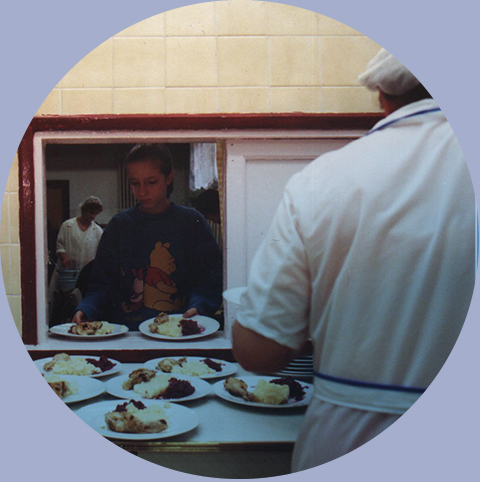
The tragedy
of the Chechen wars
PAH establishes its first permanent mission
In December 1994, Russian troops entered the breakaway republic of Chechnya. At PHO, the phones started ringing. People did not ask if we were organising help for Chechnya, but to which account they should transfer money and where they should bring their gifts. The first Chechen transport reached the town of Shali in March 1995. When in September 1999 the Second Chechen War began, we sent transports to refugee camps in neighbouring Ingushetia. On 26 October 2000, in the Chechen capital, Grozny, the first water from filters installed by PAH flowed; it was supplied to schools, hospitals and residents.
In April 2000, PAH launched its first permanent mission in Ingushetia and Chechnya, which operated until 2007. The organisation, as the first in Poland, was prepared not only to provide the basic essentials to the needy, but also to conduct permanent activities in the war-affected area. The permanent mission enabled PAH to provide long-term support to the most needy, to develop the aid structure and increase the scale of operations, as well as to develop long-term strategic institutional partnerships: in 2000, we became a permanent partner of UNICEF, and in 2003 – of the European Commission (the Directorate-General for European Civil Protection and Humanitarian Aid Operations), prior to Poland’s accession to the EU.
The first initiatives launched by PAH’s permanent mission included the organisation of kindergartens for children in the Chechen refugee camps in Ingushetia and the programme of safe zones in Grozny (hot meals for patients in hospitals, baking and distribution of bread, professional care for children, stoves for hospitals). We must not forget, however, that PAH’s aid for Chechnya was first organised immediately after the outbreak of the First Chechen War in 1995, as well as during the Second Chechen War.
The mission in Chechnya was of crucial importance. PAH was the first and only organisation to supply safe drinking water to the residents of Grozny (since 2000, over a period of six years). Hospitals, outpatient clinics, schools and refugee centres were priority water supply points. Subsequently, water distribution points appeared in places inhabited by people remaining in Grozny. Thanks to the highly efficient filters that purified 15 tons of water per hour, PAH distributed 704 tons of water for 117,000 residents each day. At the same time, PAH removed waste and garbage, built toilets and baths, reconstructed and modernised water supply systems (mainly in hospitals), and promoted hygiene in schools. Thanks to this experience, providing access to water and safe sanitary conditions (so-called WASH) became a key activity also in other countries in which PAH opened its permanent missions.
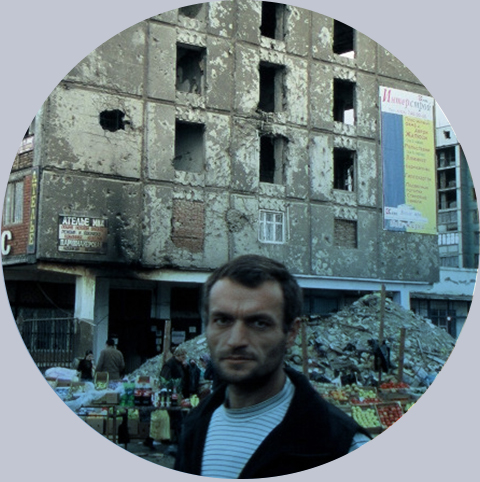
The armed conflict in Afghanistan
The first school built by PAH
PAH’s aid for Afghanistan began after the earthquakes in Rostaq, near the border with Tajikistan, in February and in May 1998, but it was only the NATO military intervention in Afghanistan in October 2001 that fully exposed the country’s dire needs in all areas: access to water, food, education and health care. The situation in the country was difficult: the infrastructure was in a very bad condition, the schools were destroyed, access to water, food, work and education was limited. Humanitarian aid was undeniably needed and necessary. PAH decided to focus on access to water and education. These initiatives enabled the organisation to develop the scope of its operations, as well as to continue rebuilding schools both in Afghanistan and in other crisis-affected places in later years.
PAH immediately set about collecting money for the conflict-affected people. The campaign “Polish zloty for Afghanistan” encouraged students to donate one zloty for help each. “If everyone brought one zloty, we would have 6.6 million zlotys. [...] We want to convince young people that one zloty can make a big difference,” said Janka. Polish schools (in big cities and in small towns and villages) quickly joined the initiative. Fundraising was preceded by workshops. The collected sum almost entirely financed the reconstruction of the School of Fine Arts and Music in Kabul.
In 2002, PAH set up a permanent mission in Afghanistan. The first project was the reconstruction of the School of Fine Arts and Music in Kabul. Gifted young people should have the opportunity to learn and improve their skills in those areas that are part of the cultural heritage of the country and guarantee acquisition of knowledge allowing them to make a good living in the future. PAH rebuilt the infrastructure of educational centres (main buildings, latrines, water tanks, sports field), equipped the school with equipment necessary to conduct classes and helped teachers improve their skills. This is a very important project for PAH, which allowed it to gain valuable experience in the field of humanitarian projects designed to rebuild schools. In the following years, PAH repeatedly rebuilt schools and supported the development of children and youth.
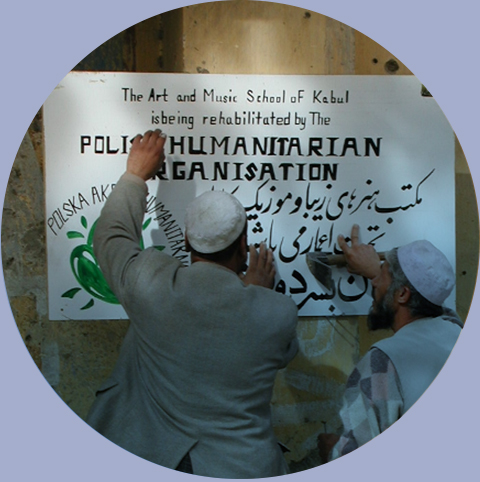
The earthquake in Iran
PAH provides immediate humanitarian aid
The 26 December 2003 earthquake destroyed 80 percent of all buildings in the city of Bam. The entire municipal infrastructure ceased to exist. Of the total of over 130,000 residents, 41,000 lost their lives. Most of the dead were killed in their sleep. 90,000 people were left without a roof over their heads. The situation of the survivors was exacerbated by lack of fresh water, difficult sanitary conditions and low temperatures. PAH built in Bam over one hundred temporary toilets and showers, as well as an orphanage building.
On 26 December 2003, a powerful earthquake struck the city of Bam in south-eastern Iran. PAH – thanks to the deep commitment of the Polish society – immediately responded to the crisis. As early as 30 December, the first consignment of relief supplies for the people of Iran was flown. Clothing, cleaning products, stoves, blankets, bedding, medical dressings and vitamins reached the most needy. In the first stage, our priority was to provide shelter and the basic essentials.
From 23 January to June 2004, a temporary PAH mission was operating in Iran. We distributed hygiene kits, and we built toilets and showers. We were assisted by a group of students from the University of Tehran, linked to the Children’s Rights Protection organisation, in which Shirin Ebadi worked. The students looked after an orphanage housed in tents. 50 children received care – they attended classes and used the library. PAH provided educational materials, electronic equipment and roofing. We decided to construct a brick building to house the orphanage, as well as to build some additional toilets.
On 10 March 2014, Shirin Ebadi, the winner of the 2003 Nobel Peace Prize, came to Cracow at the invitation of PAH and the Mayor of Cracow. On this occasion, the Cracow office of PAH conducted a fundraising campaign to collect money for the Bam orphanage, and organised a happening called “Cracow-Bam Aid Chain”, which surrounded the Main Square. This gesture of solidarity was symbolic of PAH’s activities, which are wholeheartedly supported by the Polish society.

The armed conflict
in Darfur, Sudan
PAH provides humanitarian aid to the affected regions of Africa
The war and ethnic cleansing in the Sudanese region of Darfur forced thousands of people to leave their safe homes and seek refuge in IDP camps and in neighbouring Chad. People were threatened with hunger and lack of water, and diseases caused by lack of access to sanitary facilities and deteriorating access to medical help became a major problem. PAH responded to the situation and called for aid for the Zam-Zam camp near Al Fasher.
A shipment of field tents, medicines and medical equipment reached the camp in December 2004. The relief effort was interrupted by a tsunami in South-East Asia, which distracted the attention of the public and the media from the tragedy of Darfur residents. PAH searched for ways to reach Darfur again with its help, and in 2007 it returned to start a well construction project. The “LET’S SAVE DARFUR” campaign organised together with “Gazeta Wyborcza” helped engage the Polish society in collecting funds for additional water take-off points.
The campaign gave rise to permanent PAH activities in the region, focused mainly on water projects. In 2009, access to humanitarian aid was blocked – for political reasons, all international humanitarian organisations had to close down and leave Darfur.
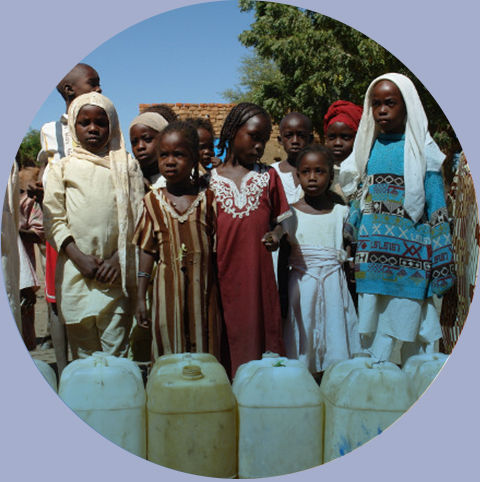
The tsunami off
the coast of Indonesia
PAH provides comprehensive humanitarian aid in Asia
On 26 December 2004, a powerful 9.2 magnitude earthquake struck off the coast of Indonesia, causing a disastrous tsunami which destroyed the coasts of Indonesia, Sri Lanka, India and Thailand, and shocked the whole world. In a flash, about 300,000 people were killed, and coastal villages and towns were completely destroyed. The cataclysm instantly deprived people of their livelihood, rendered them homeless, and left them without access to safe drinking water, food and medicines. Immediate humanitarian response was needed.
A month later, in January 2005, PAH opened its mission on the east coast of Sri Lanka, in one of the most badly affected regions of the country. Here, the tsunami reached its furthest point inland (about 2km), and caused extensive damage to the infrastructure. Over one third of the district’s population was deprived of their homes and lived in camps.
Before the tsunami, on the east coast of Sri Lanka, access to drinking water was provided by home wells. As a result of the disaster, they were polluted. PAH built and renovated deep wells and installed water purification filters in schools, hospitals, kindergartens and other public places.
PAH also made sure that children and young people have unrestricted access to education: we carried out repair works and rebuilt schools, we provided sanitary infrastructure and equipped the facilities with equipment necessary to conduct classes. In addition, PAH held professional activation classes for single mothers and women being the sole breadwinners.
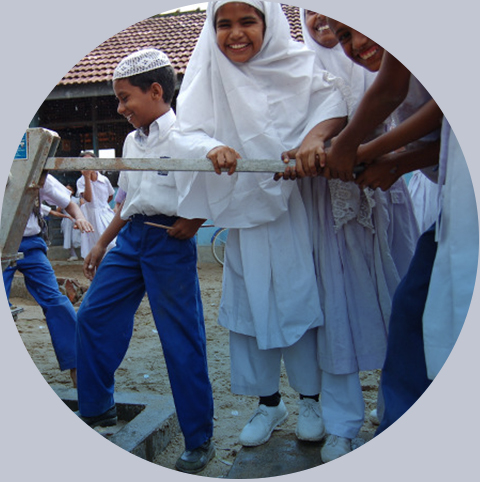
Restricted access
to safe water sources
PAH helps in the Gaza strip and in the West Bank
Ever since the commencement of the construction of the separation wall between Israel and the Palestinian Authority in 2000, many Palestinians found themselves in a difficult situation. The area of arable land shrank, and restricted access to water hindered the production of sufficient food. Lack of access to safe drinking was also a burden to schools and kindergartens. To some places, water was delivered by tanker lorries.
The mission in the Palestinian Authority was launched in July 2006, and its activities focused on three sectors: education, water-and-sanitary projects and improving the situation of women in local communities. In the West Bank, PAH built water take-off points, constructed sewage systems for households and connected them to sewage treatment plants, built water tanks and water purification plants.
PAH also rebuilt ancient water cisterns in Bedouin villages outside the Gaza Strip. The structures, which were part of the cultural heritage, still filled with rainwater, and in the dry season enabled the farm animals to survive.
In August 2006, the Israeli-Lebanese war brought about the flight of people from the south of Lebanon and a massive destruction of villages in this area. The north of Israel also suffered. Because PAH was active in the region, it provided help to refugees in the Fidar region and rebuilt water-and-sewage systems in Tiri and Rmyi.
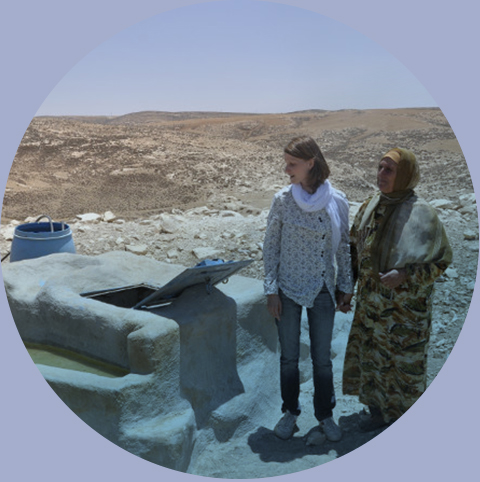
The Sudanese return
to the devastated region
PAH returns to provide aid in the badly affected region of Africa
Under a peace agreement signed in January 2005, large numbers of people returned to South Sudan – completely devastated by a long-lasting war and deprived of any infrastructure: half a million refugees from Kenya, Ethiopia and Uganda, and four million refugees from other regions of the country. The situation was extreme: 90 percent of the region's inhabitants lived below the poverty line, without electricity, water-and-sanitary infrastructure, roads and education. PAH, which had formerly provided humanitarian assistance in northern Sudan, was determined to reach those in need and provide access to safe drinking water. Another escalation of the conflict occurred in 2013, when political and ethnic wars broke out in South Sudan (by then an independent state), and consequently people were forced to flee their homes, thus losing their cattle and farms.
In July 2006, PAH opened a permanent mission in what is now South Sudan, and started the construction of water-and-sanitary infrastructure, continued to this day. To begin with, eight wells were built in the Jonglei State (in the southern part of the Bor district), financed with funds raised during the Water Campaign: I Collect Water. Throughout Poland, a public collection was held and symbolic charity wristbands were sold.
In 2007, PAH expanded its activities to help afflicted people gain access to food: we distributed farm tools, seeds and irrigation pumps, we provided agricultural training for women being the sole breadwinners, and we planted and maintained farm gardens. Our activities were becoming more and more complex: aside from building wells, we also offered training courses for mechanics, provided instruction in good hygiene practice, and organised cholera prevention campaigns. We extended our offer of vocational training, and we provided water-and-sanitary facilities for vocational training centres and schools.
Drawing on our experience gained while working in South Sudan, we conducted information and educational campaigns in Poland, bringing closer the perspective of the Sudanese people, which noticeably translated into increased social sensitivity. In 2009, the first well fully financed by a donor was built.
In 2012, we organised an Emergency Response Team (ERT), ready to provide continuous mobile assistance tailored to meet the actual needs. The ERT team distributes water purification tablets and basic products related to water quality and food safety, and it clears water take-off points. The team members have the knowledge and skills which are indispensable for making an accurate assessment of the needs, as well as for making decisions about what kind of assistance should be provided and in which places. Such assistance is particularly important when the afflicted people are forced to constantly move.
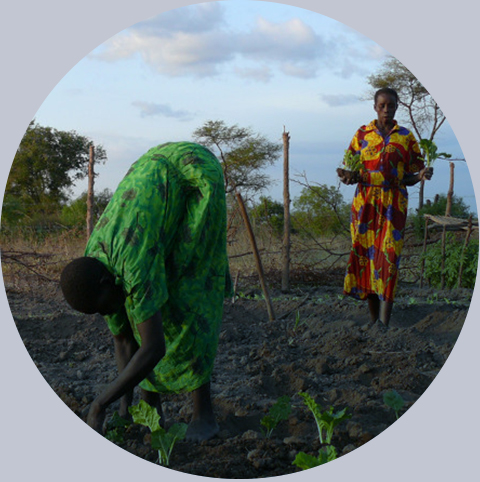
An earthquake
devastates Haiti
PAH provides shelter and care for children
In January 2010, a powerful earthquake struck Haiti, killing more than 220,000 Haitians and rendering more than two million people homeless. The disaster struck the poorest country in the western hemisphere, where the unemployment rate reached 80 percent. In the affected areas, 60 percent of schools and hospitals were destroyed. Most public administration buildings were also devastated, which caused complete chaos in this already unstable country.
PAH reacted immediately. In the first phase, we provided the Haitian people with water and hygiene kits. In the second phase, PAH focused on providing shelter and bringing about a substantial improvement of sanitary conditions. We built 400 temporary homes in Leogane and Cabaret, and we renovated a destroyed orthopaedic workshop and fitted it out with equipment and materials for making artificial limbs and ortheses.
The crisis made it necessary to pay special attention to children: to provide them with care and counselling, we organised the so-called Child Friendly Spaces.

A severe drought
in the Horn of Africa
PAH provides humanitarian assistance to Somalia
In 2011, a prolonged drought in the Horn of Africa caused widespread famine in Somalia. Lack of food, compounded by insufficient amount of safe water and limited access to sanitary facilities, as well as political instability raging in the region for more than 20 years, caused a huge humanitarian crisis.
At the end of 2011, we set up a permanent mission in Somalia, which operates to this day. Initially, we conducted our activities in Puntland (a region in the north of the country), and subsequently also in the capital, Mogadishu, and in IDP camps surrounding the city. From the very beginning, we have been striving to improve access to safe water: we build shallow and deep wells, and in schools we construct berkads – traditional rainwater tanks. We build latrines, and we conduct campaigns promoting hygiene. We provide food assistance (we ran feeding clinics for children), and we provide financial support for the most needy through direct transfers. We work together with the local people – we help them develop their skills and abilities, and we use local technologies and materials. Working with the region’s inhabitants guarantees a lasting change and ensures that our assistance is tailored to meet the actual needs.

A typhoon devastates the Philippines
PAH rebuilds homes and a school
On November 8, 2013, typhoon Hayan hit the central part of the Philippines. A powerful wind of up to 275 km per hour rendered many Filipinos homeless and deprived them of access to the basic necessities, including water, food and medicines. The worst affected were the poorest people, living in ramshackle buildings of low structural integrity. The Polish society showed its solidarity, which made it possible to provide immediate help.
PAH set about identifying the needs and began to provide assistance to residents of the devastated region already in December 2013. In less than a year, we rebuilt the homes of the worst afflicted inhabitants of the island of Bantayan. Together with the local university and a team of volunteer engineers, we designed a structure based on traditional materials and building methods, which at the same time incorporated innovative solutions. To ensure greater strength and structural integrity of buildings, we trained local carpenters and we distributed all the necessary building materials to residents. This initiative (and its quick implementation) was possible thanks to the donations sent in by individual donors. It is thanks to their generosity that 5,000 people once again have a roof over their heads. The funds donated by Poles also made it possible to rebuild a primary school in Santa Fe, Cebu province, attended by 1,000 pupils.
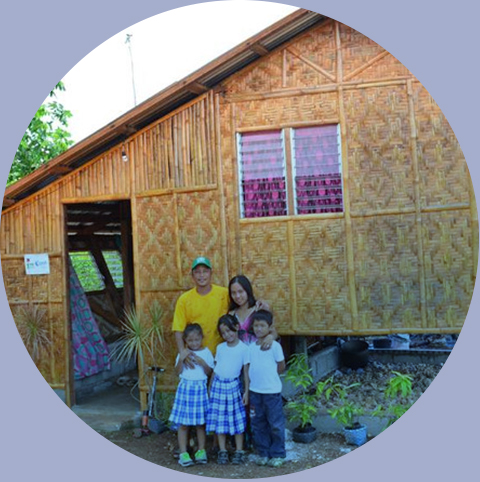
The humanitarian
crisis in Syria
PAH at the very heart of the conflict
The conflict in Syria, which has been going on since March 2011, has developed into a prolonged war, resulting in an unimaginable suffering of the civilian population, gross violation of the right of civilians to protection, and hindered provision of humanitarian assistance. The dramatic situation and constant threat have forced millions of people to migrate within the country, and millions more to flee beyond its borders.
PAH’s first reaction to the crisis was helping Syrian refugees staying in Lebanon (in March 2012). It was mainly for Lebanon that refugees from the most badly affected city of Homs headed. The money raised by PAH’s SOS Club helped fund food baskets that were delivered to 300 families residing in the Bekaa province.
With the escalation of the conflict, in March 2013, PAH began to provide regular humanitarian aid directly inside Syria. This assistance consisted in delivering drinking water, bread, blankets, hygiene kits and cleaning products, as well as medical supplies and drugs against leishmaniasis. Our initiative translated into permanent aid. To this day, humanitarian assistance is given in the provinces of Idlib and Hama, and the office in Turkey, near the Syrian border, also provides support for children of Syrian refugees.
When in December 2016 the news of the crisis in the city of Aleppo reached the media, the Polish people reacted immediately and with great determination: Poles sent in their donations and they launched numerous support initiatives. Thanks to their involvement (a total of over PLN 4.5 million was collected), it was possible to prepare for reception of refugees from Aleppo in camps run by PAH, and provide them with shelter, drinking water and adequate sanitary conditions.

The conflict
in Ukraine
PAH’s aid reaches the most vulnerable groups
In April 2014, an armed conflict broke out in eastern Ukraine. Civilians – especially senior citizens – are the most badly affected group of people. Equally difficult is the situation of internally displaced persons: they have lost all their possessions, they are jobless, they need to find a new school for their children, they have suffered a terrible war trauma – this is the reality faced by Ukrainian families when they arrive at new places.
Also the media are getting involved in helping the Ukrainians: an initiative launched jointly with “Gazeta Wyborcza” has enabled us to show the tragedy of our eastern neighbours. In the first phase, PAH supplies medical equipment, equips hospitals, provides warm clothing, blankets, dishes and hygiene kits – all that is necessary to survive a crisis. We open canteens for senior citizens. The meal we serve is often the only one that the elderly will eat during the day. And talking to others while eating helps them endure difficult times. We deliver meals to those who, due to health reasons, are unable to leave their homes.
For internally displaced persons, we run help centres, where they can obtain legal advice and counselling, consult with a social worker, or take part in training courses. For kids, we have opened kindergartens – catching up on one’s education is really crucial. The most needy families receive financial support to buy basic food and hygiene products.
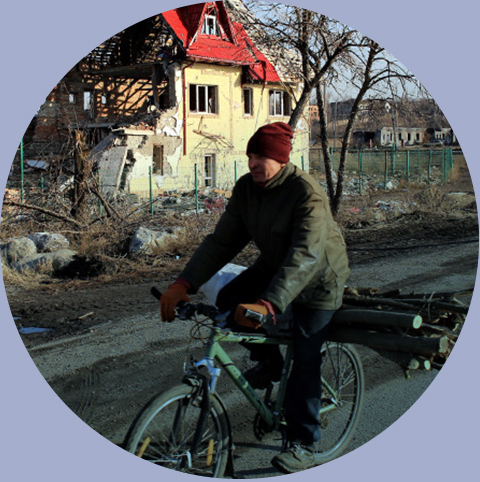
The earthquake
in Nepal
PAH reaches people in a hard-to-reach region
On 25 April 2015, a powerful 7.8 magnitude earthquake struck Nepal, followed by a series of aftershocks in May. The scale of destruction was enormous – people were rendered homeless and lost all their possessions. The mountainous terrain and damaged road infrastructure considerably hindered the relief effort.
Poles’ reaction was immediate: the deep commitment of the Polish people and the media enabled PAH to reach the place only a few days after the first shocks. Residents of hard-to-reach villages received materials to build temporary shelters. We also supplied food, water purification tablets and other basic necessities indispensable in the first phase of the crisis.
The joint action, initiated by Polish Radio 3, rallied all the most important Polish media to the Nepali cause. Special T-shirts with the inscription “SOS Nepal” became a symbol of the great dedication of the whole society. Artists and celebrities joined in to help. The scale of support was enormous: people organised charity events, concerts, auctions and collections. We were also joined by pupils – the grassroots fundraising campaign “Zamiast Kwiatka Niosę Pomoc” (“I Bring Help Instead Of Flowers”) showed that everyone can help.
In the second phase, having identified the needs, we decided to rebuild schools in the hard-to-reach mountain villages in the Dhading district. The local community was involved in the process at its every stage. Six schools made of local materials and adapted to the needs of the pupils and teachers as well as additional toilets were built thanks to the support of the Polish society.

The siege of Mosul
PAH returns to Iraq with aid for civilian population
One of the consequences of the war in 2003 was political instability, which turned into another armed conflict in 2014. It was then that the so-called Islamic State began occupying the key towns and cities in the northern part of the country (e.g. Mosul). The ongoing conflict resulted in some 11 million people in Iraq being in dire need of humanitarian aid.
The main problem is the inability to meet the most basic needs, such as access to water, food, shelter and hygiene products. Moving in search of safer living conditions, people take with them only the most needed items, and they have difficulty finding clean water or adequate food supplies.
In Iraq, we started carrying out a range of activities as early as 2003 and 2004. In many places – especially in the provinces – schools were housed in mud huts or were completely destroyed. Water was obtained from non-functioning water purification plants, and electricity was in short supply. In response to the needs of the Iraqi people, we focused mainly on providing access to water and education. Between 2003 and 2004, PAH reconstructed and renovated 44 buildings: schools, youth and sports clubs, and water purification plants. We continued our support until 2007.
We returned to Iraq at the end of 2016 in response to the plight of the civilian population caused by the fighting in Mosul. We immediately began to provide humanitarian aid to the residents of the city. We supplied food baskets, hygiene kits and water. First and foremost, our activities involve humanitarian response, i.e. meeting the most urgent needs of crisis-affected people. In Iraqi Kurdistan, we organised an Emergency Response Team (ERT), which identifies the needs of the local people and provides them with adequate assistance.
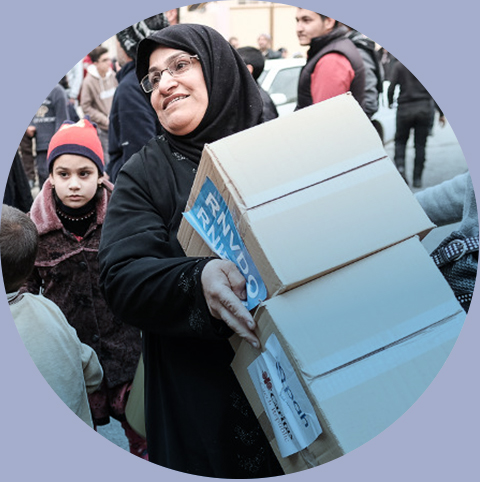
 PAH
PAH
